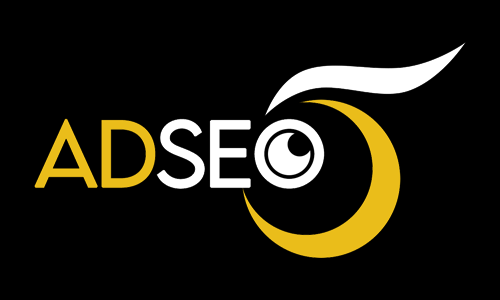SEO techniques are constantly being updated and transformed, and the best solutions are always changing. So having the best SEO performance to improve your site’s ranking can be a bit difficult. In this article, we are going to state several general points that by adding them to the basis of your SEO strategy, you can reach your organizational sales goals.
Do you know how to increase sales with the help of SEO? In this article, learn about 7 ways to increase sales with SEO.
Undoubtedly, the future and survival of any business in its industry depends on its sales. On the other hand, in today’s era, one of the requirements for increasing sales is a strong presence of a business in the online and virtual space. According to statistics, in 2017, the online sales and e-commerce industry had a value of 2.3 trillion dollars, and this figure is expected to reach more than 4.88 trillion dollars in 2021. It is very clear that if your business can form a small piece of this big puzzle, you will see a significant improvement. For this, it is vital to design and implement a strong strategy for your website’s SEO.
As you know, the online space is a very competitive world where every organization seeks to reach potential customers and convert them into actual customers in order to increase sales. But how can you take a share of the market in this huge space? Learning SEO techniques and applying them to your site can put you several steps ahead of your competitors, improve the conversion rate of loyal customers, and ultimately lead to an increase in your sales.
But SEO techniques are always updating and changing, and the best solutions are always changing. So having the best SEO performance to improve your site’s ranking can be a bit difficult. In this article, we are going to state several general points that by adding them to the basis of your SEO strategy, you can reach your organizational sales goals.
How does SEO help increase sales?
1- Use relevant keywords!
Although the user’s way of using keywords and the way he searches has changed over time and is not the same as in the past, it still has a colorful role in your planning and SEO plan. Without considering and working on keywords, the user may never find you during his search and very easily go to your competitor’s site and solve his needs through him. For this reason, keywords should be part of the basis of your SEO strategy.
For example, suppose you manufacture fishing nets by hand and your business is to sell them. An obvious keyword phrase you want to rank for is most likely handmade fishing nets. However, there are other related keywords and phrases that customers are sure to use to find a product similar to yours. Your task in the first step is to find these related words and then add them to:
- Site content
- Titles of articles
- URLs
- Image description (alt tag,…)
- Emails
- and similar cases.
Google Ads is a good tool for keyword research, but there are dozens of other sites that you can use as well. The thing that most of the people ignore and despite the favorable result it can bring, they often give less importance to it is the use of long keywords or long tail words. It may be interesting to you that more than half of the searches contain 4 terms or more, the good news is that the competition in these words has a lower level and therefore the conversion rate of these words can be better. When your keywords are exactly related to your product, it is possible that the user who searches for it is looking for your product.
2- Produce the best content
Using keywords without providing quality content will not bring the desired result. But content is actually the vehicle that will lead to conversion. Content is a tool to provide value to customers and a resource that you can use to reach other audiences.
But how important is the content? Does it have a direct impact on the sales process? How many types of content do we have?
Please click to see website design examples.
Here’s how content can be effective for increasing sales:
When customers search the Internet for information about a product or service similar to what you offer, with social media posts, blogs, web pages, etc. and other content designed to meet their needs. These resources give them the information they need and facilitate the buying process for them. When you work to design the best, most relevant and engaging content, your audience will find you before other brands, and this is an opportunity you should use to connect with your audience, convert them into leads and ultimately customers.
Good content can come in many different forms. Among the contents that you can use, the following can be mentioned:
- Blogs
- Videos (which have 50 times the organic input rate than plain text)
- Infographics that simplify various information with charts and pictures
- Podcasts
- Animations
- User-centric content
- Interviews with experts in the relevant field
- Electronic books
- Product feedback (including unboxing, product reviews, etc.)
Content is at the center of inbound marketing and having a strong strategy and great content to guide and execute it will definitely attract a lot of customers. However, always remember to optimize and update all of your content with relevant keywords and ensure that the keywords you use are relevant to the content you provide.
3- Use social networks to increase the number of your contacts
Social networks are one of the elements whose number of users is increasing every day and can have a valuable place in your SEO strategy, and this growth is due to the user’s interest in being on these networks to establish communication and direct interaction with brands. About 80% of people turn to Facebook when they want to find interesting content, which means that there is a lot of opportunity to reach new audiences, attract more leads and build lasting relationships with customers.
In addition, social media is also a great way to show the human and emotional side of your organization and express different opinions that may not be published outside the online space. In addition, advertising programs such as Facebook Ads can be used as a direct marketing tool, and you can even use social networks to see customer feedback after purchasing your products.
4- Don’t forget local SEO!
The two solutions that have received more attention in recent years in the impact of SEO on sales are those related to local and mobile SEO, although these two complement each other. Local SEO is important because nowadays people use their mobile phones more to meet their needs and find different businesses. According to statistics, more than 70% of people after searching tend to use the center closest to them to meet their needs, so if you want to attract this group of people, you need to pay special attention to local content (which includes local keywords). and pages related to it) and also pay attention to its mobile friendliness

5- Internal SEO
The importance of internal website SEO is not hidden from any SEO, although everyone can give different reasons for its importance. Internal SEO refers to all the actions you take to improve your SEO within your website
If you are thinking of increasing sales, you must follow the tips related to internal SEO. Among the results that internal SEO brings, the following can be mentioned:
- Internal SEO makes your website user-friendly
- It’s easier for search engines to index your pages, so you’ll rank better.
If you are not familiar with internal SEO, don’t worry! Below are several practical solutions that you can use for your site’s internal SEO:
- Design specific and complete title tags
- Increase page loading speed to reduce bounce rate
- Full description of page images using Alt tag
Creating appropriate internal links to create connections between related pages and easier understanding and understanding of search engines and user convenience
Adhering to the standard and understandable URL structure for search engines
Writing optimized meta descriptions for better understanding of search engines and better understanding of the user
6- Manage your credit and reputation
Reputation management isn’t always something people talk about when discussing SEO, but it’s an important element that shouldn’t be overlooked when it comes to SEO-assisted sales. Reputation management means controlling the image that your audience sees when they search for your business online. For example, let’s say you manage a restaurant that has negative feedback online and you also have a dispute with a customer on Facebook. Next, every potential customer who looks for your restaurant online and in social media will also see negative feedback and a negative image of your restaurant will be formed in his mind.
Therefore, credit management means that when customers look for you, they see the best of you and positive feedback from your business. To do this, you can do the following:
- Always be professional when interacting with your customers online
- Check online customer feedback regularly
- To the negative comments quickly, by saving the calm and answer professionally
- Giving importance to positive comments and thanking customers who have expressed their satisfaction
To read What exactly is digital marketing? Click on the link.








